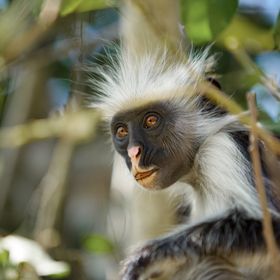

maximmalyarevich
FollowViews
114
Likes
Awards
2020 Choice Award
Outstanding Creativity
Absolute Masterpiece
Superb Composition
Top Choice
Peer Award
Superior Skill

Jillybean56
February 18, 2015
Hi Maxim, what an amazing photo. Be sure to enter it in some of the challenges for big cats as well. Welcome to Viewbug!

Same photographer See allBehind The Lens
Behind The Lens
Location
This photo was taken in Tanzania, while I was doing my 5 day safari. One of the national parks, that I visited was Serengeti, one of the biggest national parks in Africa. This lioness was lying in the yellow grass and was, indeed, injured. Lions enjoy sleeping very much, so it took me some time to get her looking in my camera.Time
It was like 6 am, when we woke up, got dressed, had some breakfast and jumped into the car. We were moving from Serengeti to Ngorongoro that day, so this lioness was one of the last animals, that I saw in Serengeti. The morning was quite cool. Roughly speaking, it was the only day, on which I had to put my sweater on. But this lioness with her beautiful eyes warmed me.Lighting
Well, magic morning light did the work. Soft light created beautiful shadows on the face and that's it, no secrets.Equipment
I used my Canon 5D Mark II camera with 70-200 f/2.8 lens and 2x extender to reach the most available close-up. So it was 400mm, that happened to be enough. That's it, no tripod or flash, just hands and magic morning light.Inspiration
I am quite fond of wildlife TV series from Nat Geo wild, BBC etc. They spread a huge love of animals in my heart. Although I am photographing in my journeys for about 4 years now, it was my 1st wildlife safari, so I didn't really know how to take animalistic photos. But my memories of Nat Geo scenes as well as simply photographer's eye helped be. My main goal was not just to show the beauty of nature and animals, but to let everyone see the animals have a character. So I photographed them a lot, catching every emotion on their faces (I have a smiling giraffe as well and many more). I hope, I've succeeded in my goals.Editing
I think, all I did in post-processing was converting the raw file. I added more contrast and also worked a little with colors, making them more soft, pastel, I would say. Well, I thing I also fixed the horizon, because in such shots like that, the line of the horizon must be strictly straight.In my camera bag
My bag normally contains a camera (it's my Canon 5D Mark II), 3 lenses: 16-35 f/2.8 to shoot landscapes, 24-70 f/2.8 for landscapes and for some kind of portraits, if there are such, the third lens is 70-200 f/2.8, usually with 2x extender, to photograph animals. The third is my favorite, as far as I absolutely adore this genre of photography. I wish I would also have a 300 f/2.8 one. Some people say it's quite amazing. I also have some filters and a tripod. Some batteries (I have 3) are also needed in journeys, especially in Africa, because we spent almost the whole day photographing in a car, and I didn't have an opportunity to charge the batteries. In Africa, there's no guarantee that you'll find electricity even in a lodge at the end of the day, so I think 3 batteries are quite good. I also have my laptop and an HDD, where I move my photos at the end of the day.Feedback
African nature is breathtaking, really. And you will fall in love with it once you visit it's national parks. First advice is: always find some information about the park and animals, that live there. The second is: find a good guide (it's quite hard to see a lion in yellow grass, really). Talking about photography: morning light is the best, as well as the evening one; If you photograph animals, shoot a lot, just one moment and a lioness is looking straight into the camera with her beautiful eyes and the photo becomes a special one, not the one from the thousands. One more: find different angles to photograph every animal, and simply experiment - this is the meaning of creativity!

























